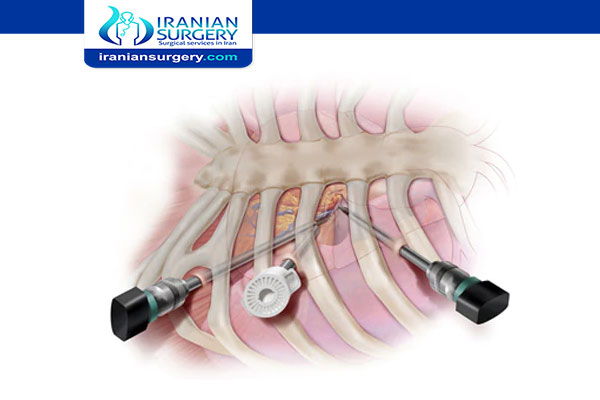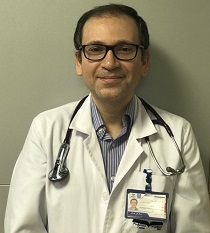How long does it take to recover from minimally invasive heart surgery?
What are the pros and cons of minimally invasive surgery?
What is Minimally Invasive Heart Surgery?
Minimally invasive heart surgery involves making small incisions in the right side of your chest to reach the heart between the ribs, rather than cutting through the breastbone, as is done in open-heart surgery.
Minimally invasive heart surgery can be performed to treat a variety of heart conditions. Compared with open-heart surgery, this type of surgery might mean less pain and a quicker recovery for many people.
________________________________________________________________________________________
Plan your Heart surgery in Iran with the Best cardiologist surgeon.
Iranian Surgery is a medical tourism company in Iran that cooperates with the best cardiologist surgeon, specialists and hospitals in Iran and offers world-class treatments at an affordable cost.
_________________________________________________________________________________________
Read more about : Iranian eye surgeons restored vision to the eyes of an Omani child.
Read more about : Coronary artery bypass surgery (CABG) success story
Before Minimally Invasive Heart Surgery
Why it's done
Many types of heart procedures may be conducted with minimally invasive heart surgery, including:
. Mitral valve repair or replacement
. Tricuspid valve repair or replacement
. Aortic valve replacement
. Atrial septal defect and patent foramen ovale closure
. Atrioventricular septal defect surgery
. Maze procedure for atrial fibrillation
. Coronary artery bypass surgery
. Saphenous vein harvest for coronary artery bypass surgery
How you prepare
Before minimally invasive heart surgery, your doctor and treatment team will explain to you what to expect before, during and after the surgery and potential risks of the surgery.
Your doctor and team will discuss concerns you have about your surgery. Your doctor or another member of your treatment team might discuss with you advance directives or other information to consider prior to your surgery.
You may need to have your hair shaved at the areas of your body where the procedure will take place. Your skin might be washed with special soap to reduce the risk of infection.
Before being admitted to the hospital for your surgery, talk to your family about your hospital stay and discuss help you might need when you return home. Your doctor and treatment team will give you instructions to follow during your recovery when you return home.
Food and medications
Talk to your doctor about:
. When you can take your regular medications and whether you can take them before your surgery.
. At what time you should stop eating or drinking the night before the surgery.
Read more about : Heart attack causes
Read more about : Angiogram procedure
Read more about : Echocardiogram
Advantages and Disadvantages
What are the benefits of minimally invasive heart surgery?
Minimally invasive surgery confers many advantages over standard approaches derived largely from the reduced trauma to the chest wall tissues. The benefits of minimally invasive cardiac surgery include:
. Smaller incisions
. Smaller scars
. Reduced infection risk
. Less blood loss
. Less pain
. No opening of the chest or cutting of bones
. Shorter hospital stays. Stays after minimally invasive operations are from 3 to 5 days compared to 5 to 7 days for traditional sternotomy-based cardiac operations.
. Fewer physical restrictions. Patients undergoing standard incision cardiac operations are restricted from driving an automobile or lifting objects weighing more than 5 pounds while patients undergoing minimally invasive heart surgery are not subject to these restrictions.
. Shorter recovery time. Recovery times after minimally invasive operations are from 2 to 4 weeks compared to 6 to 8 weeks for standard sternotomy-based cardiac operations.
Dr. Mohammadreza Mirzaaghayan
Cardiac surgeon
Chief of cardiac surgery unit
Department of Surgery
Markaz Tebbi Kodakan
Tehran University of Medical Sciences
Tehran – Iran
Disadvantages of Minimally Invasive Heart Surgery
Although the pros of minimally invasive surgery outweigh the cons, it’s still important to know the disadvantages of MIS. Because minimally invasive surgery requires that surgeons have highly specialized training and need to use costly specialized, high-end equipment, MIS itself can be quite expensive. In addition, certain procedures may take longer, especially the most recent ones to be adopted. However, health insurance can greatly offset these costs.
Read more about : Heart Transplant Surgery
Read more about : Closed heart surgery
Read more about : Heart Bypass Surgery
Read more about : Open heart surgery
Disadvantages:
. Minimally invasive surgery requires specialized high-end medical equipment.
. Surgeons need specialized training.
. The equipment used with MIS is more expensive.
. There are various procedures, especially the most recent surgeries that may take longer.
Who benefits from minimally invasive heart surgery?
Not everyone is a candidate for minimally invasive heart surgery. Your doctor and treatment team will work with you to determine whether it's an option to treat your condition.
To determine whether you're a candidate for minimally invasive heart surgery, your doctor is likely to conduct a physical examination, review your medical history and perform tests.
Minimally invasive heart surgery is a complex surgical procedure that requires training and experience. You might be referred to a medical center with surgeons and a surgical team who have the needed expertise in conducting minimally invasive procedures.
Read more about : Virgin tightening surgery before and after
Read more about : Stages of fissure healing
Read more about : Ovarian cyst size chart
Read more about : Arachnoid cyst size 3 cm
Risks
Minimally invasive heart surgery can involve risks similar to open-heart surgery, such as:
. Bleeding
. Stroke
. Infection
. Irregular heart rhythms (arrhythmias)
. Death
Also, it's possible that minimally invasive heart surgery will need to be changed to open-heart surgery if your surgeon thinks it's not safe to continue with the minimal approach.
During Minimally Invasive Heart Surgery
During the procedure
Minimally invasive heart surgery includes robot-assisted heart surgery, thoracoscopic surgery and surgery through a small incision in the chest (direct less invasive access heart surgery). In all types of minimally invasive procedures, surgeons reach your heart through small incisions between the ribs of your chest.
A tool with a small video camera inserted through one of the incisions will enable the surgeon to see inside your body.
Most minimally invasive procedures use a heart-lung bypass machine, as is used in open-heart surgery. The machine keeps blood moving through your body during the procedure.
. Robot-assisted heart surgery
In robot-assisted heart surgery, the surgeon uses robotic arms, rather than his or her hands, to perform the exact maneuvers used in traditional open-heart surgery.
During this procedure, your surgeon works at a remote console and views your heart in a magnified high-definition 3D view on a video monitor. From the console, your surgeon's hand movements translate precisely to the robotic arms at the operating table, which move similarly to the human wrist.
A second surgeon and surgical team assist at the operating table, changing surgical instruments attached to the robotic arms.
. Thoracoscopic surgery
In thoracoscopic surgery (sometimes referred to as a minithoracotomy), your surgeon inserts a long, thin tube (thoracoscope) containing a tiny high-definition video camera into a small incision in your chest.
Your surgeon repairs your heart using long instruments inserted through small incisions between your ribs.
After Minimally Invasive Heart Surgery
After the procedure
You'll generally spend a day or so in the intensive care unit (ICU). You'll be given fluids and medications through intravenous (IV) lines. Other tubes placed during surgery will drain urine from your bladder and fluid and blood from your chest. You might be given oxygen through a facemask or prongs in your nose.
After the ICU, you'll be moved to a regular hospital room for several days. The time you spend in the ICU and hospital will depend on your condition and surgery.
Your treatment team will:
. Monitor your condition and watch for signs of infection in your incision sites
. Monitor your blood pressure, breathing and heart rate
. Work with you to manage pain
. Get you up and walking and instruct you to gradually increase your activity
. Show you how to do deep-breathing exercises and instruct you to cough to keep your lungs clear.
Your doctor will give you instructions to follow during your recovery, such as watching for signs of infection in your incisions, caring for your incisions, taking medications and managing pain.
Results
After minimally invasive heart surgery, you might have an improved quality of life and reduced symptoms.
Your doctor will instruct you about when you can return to daily activities, such as working, driving and exercise.
You'll need to attend regular follow-up appointments with your doctor. You might have several tests to evaluate and monitor your condition.
Your doctor might instruct you to incorporate healthy lifestyle changes — such as physical activity, a healthy diet, stress management and avoiding tobacco use — into your life.
Your doctor might also recommend that you participate in cardiac rehabilitation — a program of education and exercise designed to help you improve your health and help you recover after heart surgery.



